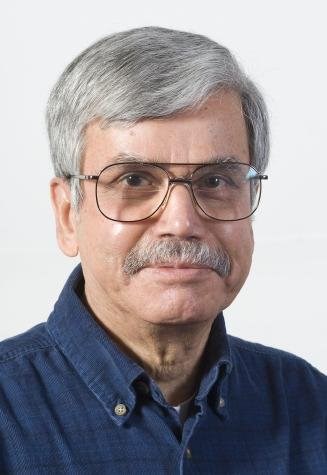 Many a times I have been called a ŌĆ£wise guyŌĆØ.╠² But seldom has anyone referred to me as a ŌĆ£wise personŌĆØ.╠² Joking aside, let me explore wisdom in this article, as explained in Hindu philosophy.╠² Hindu scriptures describe different paths to ŌĆ£MokshaŌĆØ or salvation.╠² Of these, the path of ŌĆ£J├æ┤Ī▒Ę┤ĪŌĆØ is likely to be misinterpreted or misunderstood most often.
Many a times I have been called a ŌĆ£wise guyŌĆØ.╠² But seldom has anyone referred to me as a ŌĆ£wise personŌĆØ.╠² Joking aside, let me explore wisdom in this article, as explained in Hindu philosophy.╠² Hindu scriptures describe different paths to ŌĆ£MokshaŌĆØ or salvation.╠² Of these, the path of ŌĆ£J├æ┤Ī▒Ę┤ĪŌĆØ is likely to be misinterpreted or misunderstood most often.
The misunderstanding can arise from either interpreting ŌĆ£J├æ┤Ī▒Ę┤ĪŌĆØ as simply knowledge of the physical world (acquired by learning the sciences or mathematics), or as expertise in philosophical thought (of any origin or school).╠² Alas, the short Sanskrit word ŌĆ£J├æ┤Ī▒Ę┤ĪŌĆØ is indeed not easy to translate, and even more difficult to comprehend.
The Hindu scriptures called Upanishads describe two types of knowledge ŌĆō the ŌĆ£lowerŌĆØ knowledge, which is the understanding of the phenomenal world, and the ŌĆ£higherŌĆØ or spiritual knowledge, which is knowledge of the ŌĆ£Supreme SelfŌĆØ (atman) beyond duality.
The Upanishads encourage us to acquire both types of knowledge.╠² The lower knowledge includes the sciences, mathematics, and even an understanding of philosophy.╠² It also includes knowledge of righteous actions (ŌĆ£dharmaŌĆØ) and unrighteous actions (ŌĆ£adharmaŌĆØ).╠² The higher knowledge is attained when the understanding of the ŌĆ£Supreme SelfŌĆØ, which is the experience of being one with the Supreme Being or ŌĆ£BrahmanŌĆØ, pervades oneŌĆÖs mind and consciousness at every moment ŌĆō whether waking, asleep or dreaming.╠² Wisdom arises naturally as one climbs the ladder of higher knowledge, and it keeps growing.
The ŌĆ£lower knowledgeŌĆØ, or its acquisition is not to be disregarded.╠² Indeed, the process of acquiring it not only helps us develop an understanding of Nature in which we are immersed, but helps us acquire the discipline necessary to acquire the ŌĆ£higher knowledgeŌĆØ, as illustrated by the chant in the Upanishads which says: ŌĆ£May Brahman protect us both ŌĆō the teacher and the student; may Brahman nourish us both; may we both acquire energy by this education; may we not hate each other (and not hate any other being in the universe).ŌĆØ╠² Education nourishes inspiration, self confidence, and mental maturity, amongst other attributes, of the student, and paves the path towards enlightenment.╠² As the prayer in the Vedas says: ŌĆ£ŌĆ” Lead us from (mental and spiritual) darkness to illumination ŌĆ”ŌĆØ ŌĆō that is the true purpose of education.
Being one with the Supreme Being is being one with the creation, and everything and everyone in it.╠² The Hindu scripture Bhagavad Gita says: "Those who possess this wisdom have equal regard for all. They see the same Self in a spiritual aspirant and an outcaste, in an elephant, a cow, and a dog."╠² Lack of wisdom creates an unfathomable chasm between us, creates an unsurmountable wall between us.
What are the contributing factors to wisdom? The Upanishads describe many of these factors, and Hindu mythologies illustrate them through stories.╠² Some of these factors are: controlling the senses, the refinement of speech, discipline of the mind, channeling of the will, the exercising of consideration, engaging in meditation and reflection, developing and constantly refining understanding.
Keeping hope and faith, being steadfast. and inculcating many other such attributes enables us to move towards wisdom and mental as well as spiritual maturity.╠² All these, learned and assimilated from childhood, prevents us from becoming what the enlightened Swami Vivekananda once characterized as ŌĆ£moustached babiesŌĆØ
Wisdom diverts us away from a singular focus on ŌĆ£me, myself and IŌĆØ, to understanding our transience through this life, to understanding true bliss (and differentiating it from temporary happiness), to not be discouraged by short-term problems, difficult circumstances or even devastating experiences.
Wisdom ultimately leads us to becoming one with Brahman, the Supreme Being.╠² That is, wisdom enables us to achieve ŌĆ£mokshaŌĆØ, or salvation.
 Suresh Basrur╠²practises the Hindu faith, participates in inter-faith activities in Victoria, and speaks to audiences about Hindu religion, philosophy and practices.
Suresh Basrur╠²practises the Hindu faith, participates in inter-faith activities in Victoria, and speaks to audiences about Hindu religion, philosophy and practices.
You can read more articles on our interfaith blog, Spiritually Speaking, HERE
* This article was published in the print edition of the sa╣·╝╩┤½├Į on Saturday, November 17th 2018
Photo of path by╠²╠²┤Ū▓į╠²
╠²
╠²


